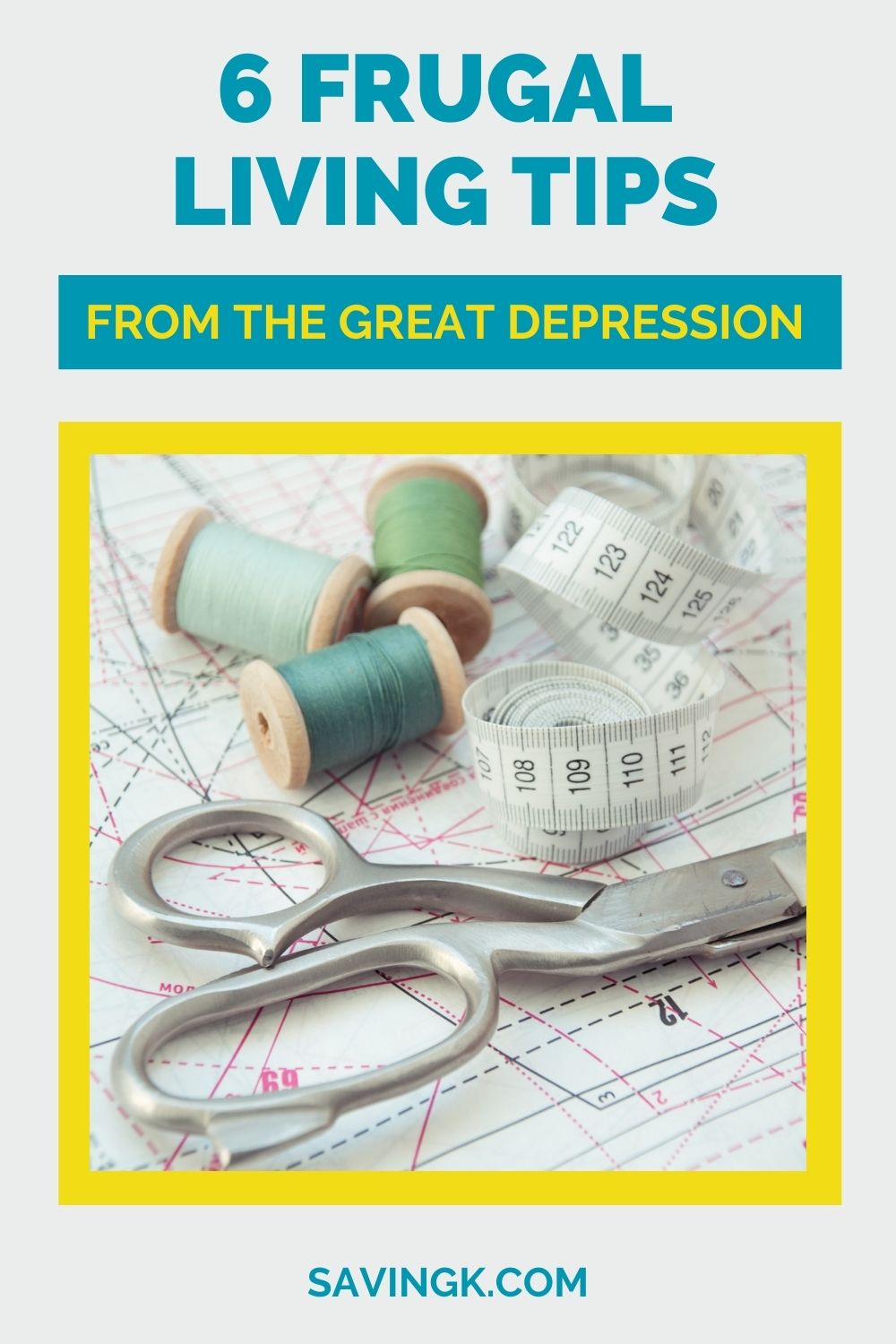
The Great Depression of the 1930s was one of the most difficult times in American history. Millions of people lost their jobs, homes, and savings. It is from this time that many frugal living tips were born. Despite having few resources to work with, people during this era still managed to make do and get by with what they had. Here are some useful frugal living tips from the Great Depression that will help you save money today.
Contents
Frugal Living Tips From The Great Depression
Even though the Great Depression was a difficult time for many families, it also gave rise to some of the best frugal tips and tricks ever created. In this post, we’ll look at how you can apply those same lessons from the past to your own life – no matter what economic times you’re experiencing. With a little creativity and resourcefulness, you can start saving money with these great depression-era frugal living tips.
1. Make Do With What You Have
The first step to frugal living is learning how to make do with what you have. This means taking a look at the items you already own and finding ways to use them creatively. For example, if you have an old shirt that no longer fits, you can use it as a rag or cut it up into pieces and sew it into something new like a pillowcase or quilt. During the Great Depression, people would often mend their clothes or take apart old items for parts to build something new with.
2. Reuse And Recycle
Finally, another important part of frugal living is reusing and recycling items whenever possible instead of buying new ones all the time. During the Great Depression, people would often reuse materials such as glass jars for storage containers or fabric scraps for clothing repairs instead of buying new products each time something broke or wore out quickly. Additionally, they would recycle paper products such as newspaper and cardboard boxes for various crafts projects around the house – a practice that has become increasingly popular in more recent years due to its environmental benefits but has been around for much longer than many people realize!
3. Repurpose Items Around Your Home
In the 1930s, people became masters of repurposing items around their homes in order to save money. For example, old clothing was turned into quilts or used for cleaning cloths; scrap metal was made into toys and kitchen utensils; and empty food tins were reused as storage containers or plant pots. If you get creative, there are plenty of ways to repurpose items around your home instead of throwing them away and buying new things.
4. Avoid Waste And Reduce Spending
Another key part of frugal living is avoiding waste and reducing spending whenever possible. This means being mindful about your purchases and only buying what you need when it’s necessary. During the Great Depression, people would buy second-hand clothing or shop at grocery stores that sold food in bulk at discounted prices. This allowed them to stretch their money further while still getting what they needed. In addition, they would avoid eating out or going on expensive vacations because these activities were considered luxuries rather than necessities during this period of time.
5. Plan Ahead for Shopping Trips
During the Great Depression, people had to plan ahead for their shopping trips because they had limited resources. This meant that they only bought what they needed and could afford. You can do the same thing today by planning out your grocery list before heading to the store, so you don’t end up buying unnecessary items. Planning ahead will help keep your budget in check and prevent impulse purchases that could add up over time.
6. Make Your Own Cleaning Products
During the Great Depression, people couldn’t afford store-bought cleaning products, so they improvised by making their own all-natural cleaners out of ingredients like vinegar and baking soda. Making your own cleaning products is not only cheaper than buying commercial ones – it’s also better for your health since it eliminates exposure to harsh chemicals found in many cleaners available on the market today. Plus, it’s really easy! All you need is a few basic ingredients that can be found in most pantries or cupboards – baking soda, white vinegar, lemon juice, etc.- and you can make all kinds of effective cleaners for different surfaces in your home.
Conclusion
The Great Depression taught us many valuable lessons about living frugally – lessons that can still be applied today! By planning ahead for shopping trips, repurposing items around your home and making homemade cleaners from natural ingredients found in most kitchens, you can save money without sacrificing quality or comfort. With a little bit of creativity and resourcefulness, you too can start living more frugally just like people did during The Great Depression!





